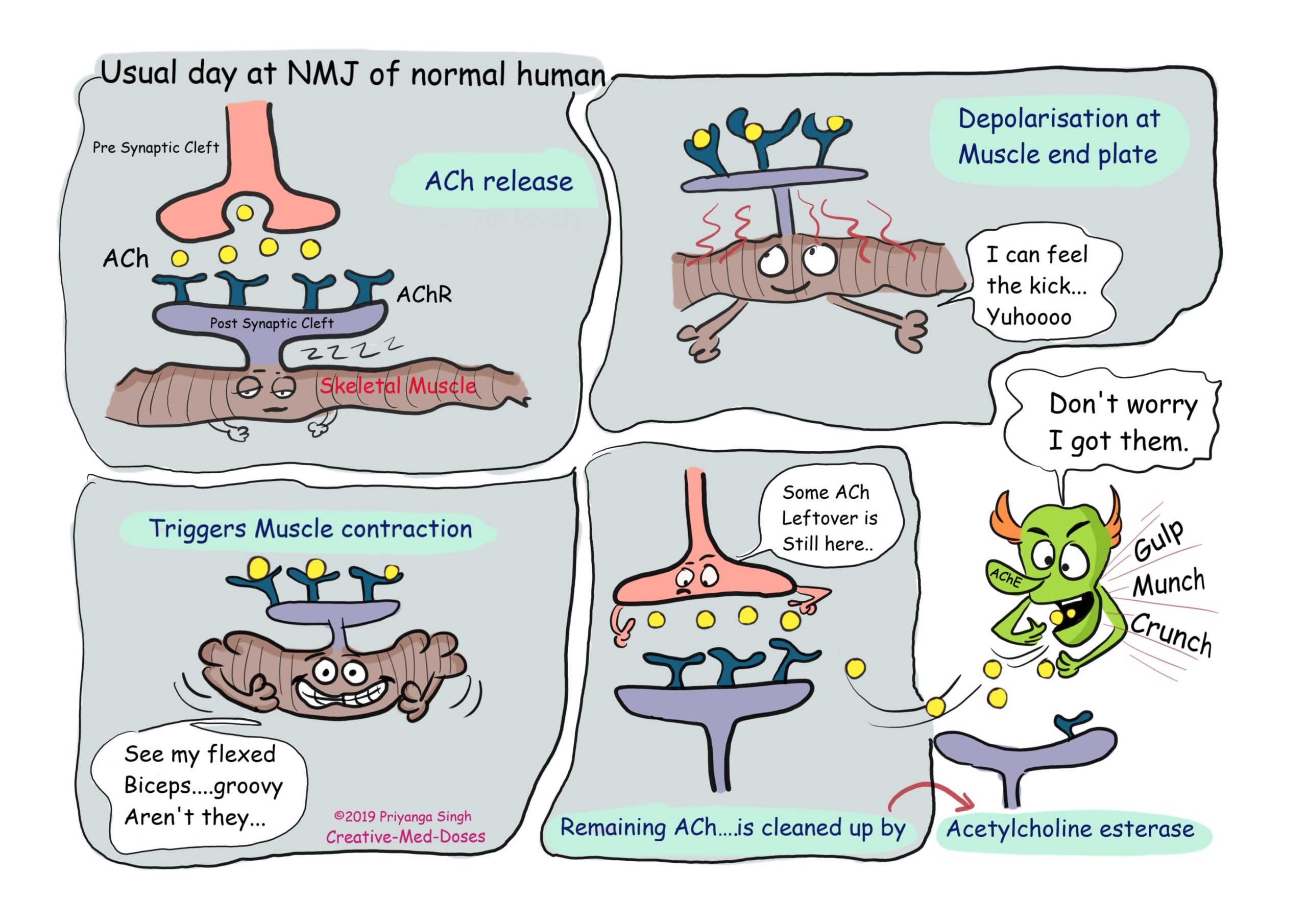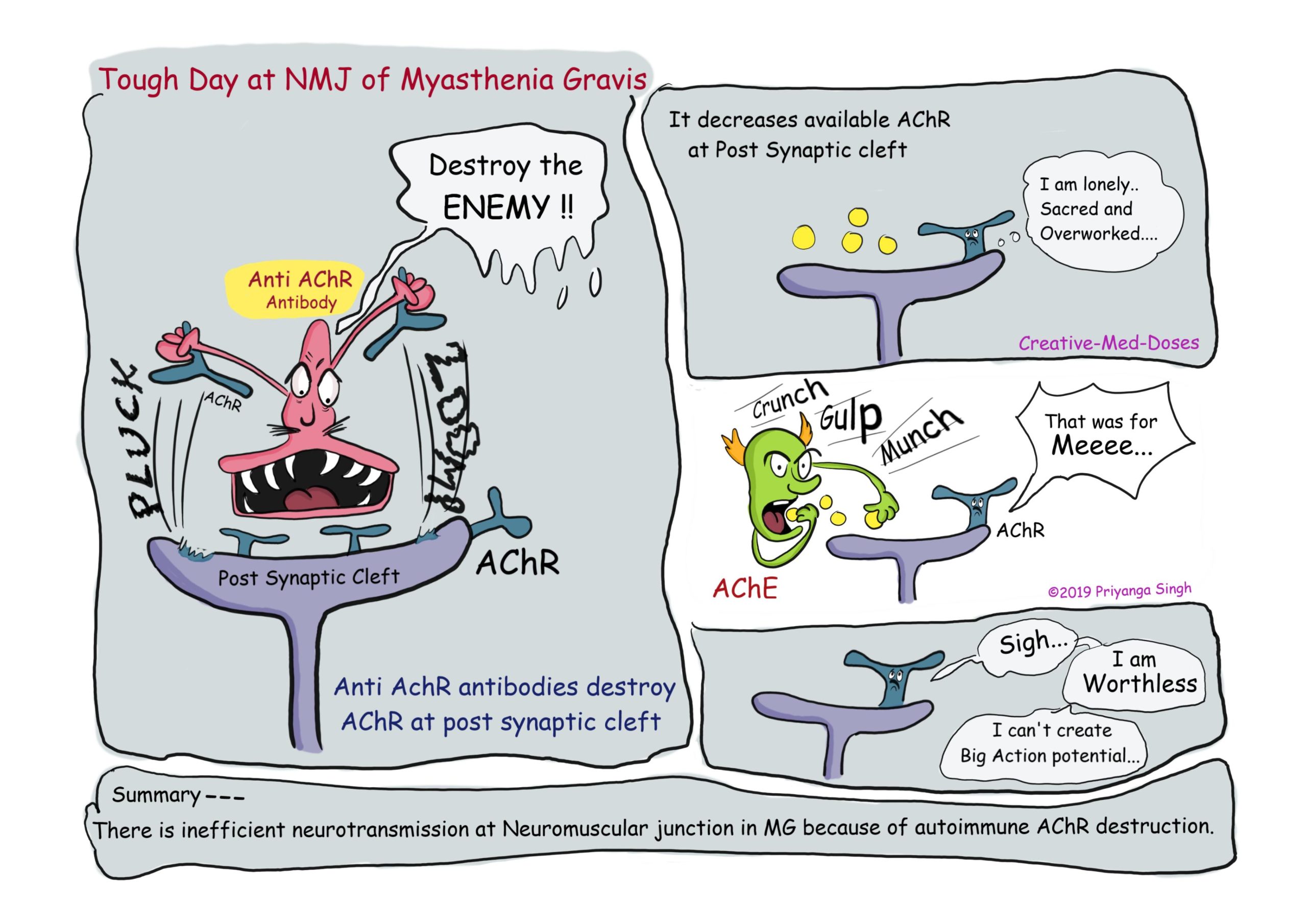Myasthenia Gravis: Pathogenesis
What happens Normally…….
At the Neuromuscular Junction acetylcholine (ACh) is synthesized in the motor nerve terminal and stored in vesicles. When an action potential travels down a motor nerve and reaches the presynaptic nerve terminal, ACh is released from these vesicles and attaches to AChRs (Acetylcholine Receptors) that are densely packed at the peaks of postsynaptic muscle end plate.
When ACh combines with the AChR, the channel in the AChR opens rapid entry of cations, chiefly sodium, which causes depolarization at the end-plate region of the muscle fiber.
If the depolarization is sufficiently large, it triggers muscle contraction.
This process is rapidly terminated by two ways…
- by hydrolysis of ACh by acetylcholinesterase (AChE)
- by diffusion of ACh away from the receptor
...

...
What happens in Myasthenia Gravis……
MG is an autoimmune disorder most commonly caused by antiAChR antibodies. The anti-AChR antibodies reduce the number of available AChRs at neuromuscular junction.
This decrease in the number of available AChRs at the postsynaptic muscle membrane causes decreased efficiency of neuromuscular transmission.
In Myasthenia Gravis, ACh is released in normal amount but it doesn’t have enough AChRs, hence it produces small end-plate potentials and fails to trigger muscle action potentials. Failure of transmission results in weakness of muscle contraction in Myasthenia Gravis.
..

...
Stay tuned for more on the topic...
Book release notification....yoy can enjoy Osteopetrosis book here https://www.amazon.com/dp/B0819TLBQF/ref=sr_1_2?keywords=Osteopetrosis&qid=1573536622&s=digital-text&sr=1-2